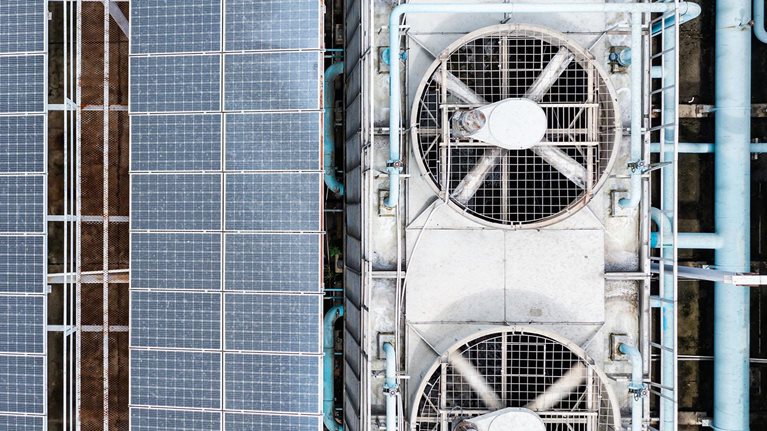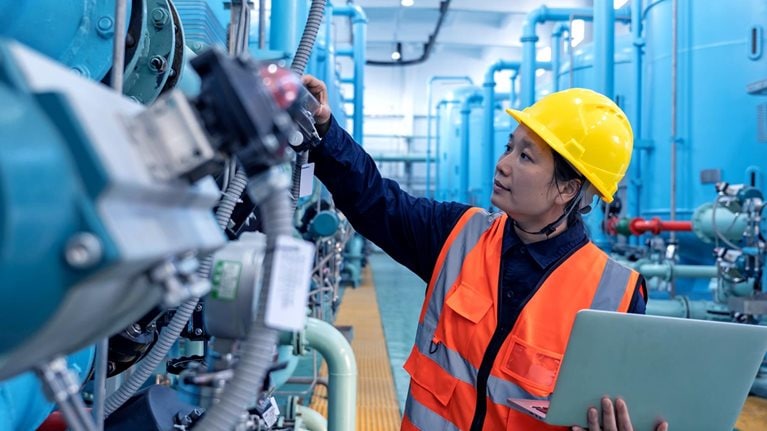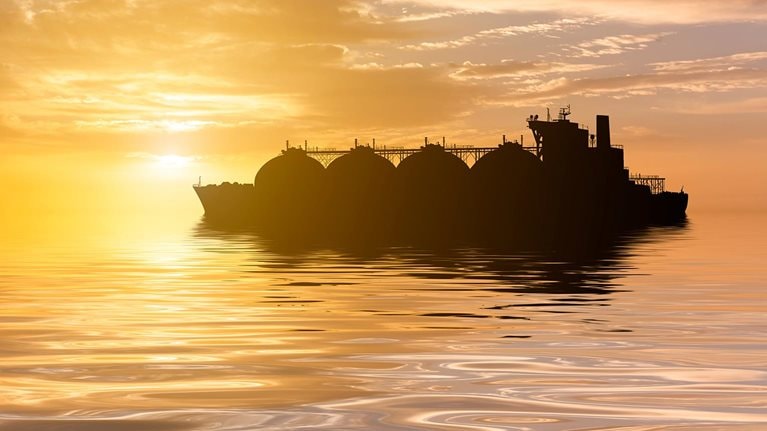The recent market turmoil and ongoing challenges of an accelerated energy transition are putting pressure on all sectors of society, from governments to utilities to consumers—industrials included. Industrials are highly exposed to energy costs and the recent price volatility caused by large disruptions such as the invasion of Ukraine, among others, has severely affected the sector’s energy cost baselines.1 In addition, the sector has to significantly reduce emissions to meet the ambitious decarbonization targets that companies are setting for the coming years and decades.
To address these challenges, industrials could rethink their energy strategies focusing on four main objectives: reducing emissions, sourcing affordable energy, ensuring security of supply, and ensuring their competitiveness. While this is not easy, near-term action by industrials can help to preserve and secure business viability.
In this article, we highlight the challenges that industrials in Europe face and set out a case for defining a robust energy strategy to address them. We describe how industrials can articulate their energy strategies, from optimization models for supply and demand to partnership strategies and governance. Finally, we outline four key actions that industrials can take to enable them to face present challenges and ready themselves for an uncertain future.
Key challenges and a strategy to address them
Faced with high electricity prices, sustainability objectives, and a fragile energy supply chain often disrupted by market volatility, some industrials are struggling to preserve the financial sustainability of their business. Tackling these key challenges in their energy strategy can help industrials to achieve long-term business security.
Optimizing energy costs—a way to reduce pressure and volatility on cost structure
The unprecedented turmoil in energy markets has led to record-high energy prices. In Europe, power prices increased more than ten times between March and September 2022 following the invasion of Ukraine.2 Similarly, gas prices increased ten times and are expected to remain around one-and-a-half to two times higher after 2025 than the pre-energy-crisis average (Exhibit 1).

Industrials are faced with a substantially challenging energy environment. Consider, for instance, energy-intensive sectors—such as aluminum and ammonia—that, as a result of high energy costs, have experienced an increase in their overall cost base of more than 100 percent.3
Beyond these elevated levels, volatility adds an additional challenge for energy prices going forward. As energy systems grow with renewable energy system (RES) penetration, so too will volatility. Moving forward, a large spot exposure can become problematic in a volatile market.
Near-term action by industrials could limit the impact of energy prices on competitiveness. And there is a pressing need to so do. For instance, energy efficiency levers are constantly being explored, as a further reduction of the gas supply to Europe could substantially impact economic activity.
With all of this considered, more and more industrials are looking to optimize their energy costs and boost their capabilities to ensure resilience through the volatility of the cycle.
Would you like to learn more about our Electric Power & Natural Gas Practice?
Securing energy supply to avoid production disruption
Industrials usually generate a significant share of their final energy needs with their own assets on-site, for example, via combined heat and power (CHP) plants. Typically run on fossil fuels, these assets expose industrials to commodity price volatility and supply issues. In the case of electricity, higher RES penetration could increase grid constraints, so—even with a stable grid connection—industrials could experience disruption in periods with high grid congestion.
Shifting to renewable sources does not necessarily solve industrial sites’ security of supply. Biomass or biofuels still expose industrials to supply chain issues and price volatility as the primary resource needs to be secured in the market. Solar photovoltaics (PV) or small hydro assets, that are intermittent and the primary resource does not have to be secured in the market, require flexible assets or grid imports to match industrial demand.
Securing a constant and reliable energy supply for the industrial process is important to avoid production disruption and meet commercial commitments. Diversifying energy sources or building limited but key redundancies into the system could increase security of supply in the future—for example, maintaining grid connection capacity despite new renewable on-site assets having been installed, or keeping legacy fossil fuel assets like gas boilers as backup.
Today, there are industrials in Northern Europe capable of switching on and off island mode as needed. This model is increasingly being explored globally as industrials weigh the possibility of a “resilience premium” against the possibility of loss of production in the face of security shortages.
Addressing ambitious decarbonization targets
Industrials are not only facing pressure from record-high prices but may also be under time pressure to decarbonize their footprint if they want to future-proof themselves by meeting the not-too-distant, net-zero goals that have been set for many industrial sectors. To achieve the 1.5° pathway, industrials across the globe will need to reduce their CO2 emissions by 10 gigatons (Gt), and, as a result, many industrials have set ambitious decarbonization targets for the coming decade (Exhibit 2).

Decarbonization targets need to be reached—and energy is responsible for a large proportion of Scope 1 and 2 emissions. Many industrial companies have near-term targets set for 2030 or earlier, creating an urgency for a dramatic reduction of Scope 1 and 2 emissions. Yet, many industrials lack the robust energy strategy (including tools, capabilities, and governance) that they need to achieve their targets. And, the implementation of strategies will take time. The challenge is that alternate energy decisions typically involve a trade-off of time versus cost and therefore can require years to implement.
Building a resilient energy strategy
In our work with industrials across sectors, we have seen that a sound energy strategy is a common—albeit difficult to define—factor in companies that manage these hurdles successfully.
The journey toward defining and implementing an energy strategy is not going to be equal for all industrials in Europe, as some industries are more exposed to fossil fuels and decarbonizing might come at a cost. For industrials in sectors like pulp and paper, automotive, good manufacturers, and others, embracing the energy transition could present the following opportunities:
- applying the right energy efficiency levers might reduce up to 50 percent of the energy cost baseline4
- optimizing and decarbonizing the energy supply with renewable sources (more precisely, their levelized cost of electricity) is more competitive now than sourcing energy from the grid, for example, the levelized cost of onshore wind or solar power is below the current market electricity spot price in most European countries
- relying less on grid imports may also reduce cost volatility (by mitigating the exposure to electricity and fossil fuel price peaks) that cannot be avoided even with a robust hedging strategy, especially when self-generation includes dispatchable generation and/or firm renewables
Industrials can focus on the following five dimensions to develop a robust energy strategy that overcomes the key challenges and seizes any opportunities: energy efficiency; electricity and heat supply optimization; risk and resilience to the market; implementation approach; and energy governance.
Demand optimization: Energy efficiency could enable savings of up to 55 percent
In a period of high energy cost, revisiting ambitious energy efficiency initiatives might yield new, attractive opportunities—sometimes the cheapest megawatt hour (MWh) is the one that is never consumed. The International Energy Agency recently noted that energy efficiency investments are at the highest level ever.5
Industrials would likely gain from understanding the energy efficiency potential in the context of the new energy world. This step can be taken before exploring opportunities on the supply side, given the possible changes in consumption profile and volume that could impact a company’s energy sourcing strategy and mix.
Energy efficiency is not a new topic, but high energy prices have reduced the payback time of capex-intensive initiatives, given the increase in savings that those initiatives could bring. Strategic moves could enable energy savings of about 30 to 55 percent.6
For industrials, the biggest opportunity for savings lies in the process-heat domain. Various solutions can be used to address engineering and shop floor issues and to rethink processes and the energy system setup, including advanced heat integration and system design. Heat recovery, pump and fan system design, and many more energy efficiency initiatives exist. However, all decisions need to consider energy use as well as energy cost.
For instance, the hourly volatility of electricity prices is increasing. For example, in March 2022, intraday price amplitudes reached over €400 per MWh—nine times higher than in 2021.7 That means that any MWh that could have been moved from the high-price hour to the low-price hour (or period) came at a discount of €400. Hourly volatility of prices could potentially remain high with the increase of intermittent sources in the system—like renewables—and, with that, the value of demand flexibility will grow. Industrials can increase their consumption flexibility to accommodate renewable sources and leverage the period of lower electricity costs, for example, by shifting operating hours and installing batteries.

Global Energy Perspective 2023: Industrial electrification outlook
Supply optimization: Comprehensive electricity and heat optimization on a site-by-site basis to define the portfolio view
Optimizing the portfolio that delivers the final units of electrical or thermal energy to the industrial process is vital for an effective energy strategy. This can be achieved by combining different technologies and instruments in an optimized system setup and considering their cost economics, operational behavior, and constraints.
In some industrial sectors, a significant part of energy demand comes in the form of process heat. The heat and electricity domains are often tightly coupled—for example, in combined heat and power generation or power-to-heat assets like heat pumps. Industrials often own and operate substantial energy assets on-site, and these existing systems have to be embedded into the energy strategy.
Industrials can take an integrated perspective when defining their future energy strategy to meet their decarbonization ambitions. The most cost-effective approach often explores a multitude of levers simultaneously, such as:
- advanced energy efficiency initiatives and process refurbishments
- alternative fuels, such as biomass or biogas, for existing energy assets
- advanced heat integration and electrification
- direct sourcing or renewable electricity, either via self-owned assets like on-site solar PV or new market instruments like power purchasing agreements (PPA)
- integration of advanced technologies like electrical or thermal storage
- refurbishment of existing energy assets
Cost-optimal and carbon-minimal energy systems often use a combination of these levers to exploit individual strengths and increase resilience through redundancy. Consider, for example, a typical industrial company that optimized its energy system: the organization reduced both costs and carbon emissions by switching from natural, gas-fired heat generation and grid power to a combination of renewable energy generation. This was done by using a range of technologies and the addition of electrified heat generation and heat storage that were embedded in an incumbent energy system.
Risk and resilience: Build on supply security and market resilience by diversifying away from fossil fuels
Risk management has become a critical capability for industrials to mitigate the impact of energy price volatility on costs. Energy costs are currently uncertain and, depending on the market evolution, could heavily impact industrials’ margins and strategies. Any energy strategy needs to be tested against the market and consider several market scenarios. When volatility is the norm, resilience becomes critical.
Front-runners are already applying mathematical techniques to predict energy costs. By doing so, industrials could achieve a probabilistic view of what the cost could be, as well as the payback of any investment to reduce energy costs and emissions. Instead of a single business case based on a deterministic view of the energy market, companies could have a perspective on a probability distribution function for cost and all the associated KPIs of a business case. Importantly, any energy strategy should be resilient across a wide lens of energy scenarios. The most resilient energy strategy would likely be the one that reduces the probability of incurring high energy costs, hence providing more stability to financials.
In the context of high market volatility and uncertainty, industrials could adopt a more sophisticated approach to the risk management of energy costs to be able to make more informed decisions and to better assess business cases.
An implementation approach: Best-fit operating model across the value chain
To manage change successfully from a portfolio perspective, industrials may need to define efficient implementation plans with key partners along the value chain—such as OEMs, engineering companies, and utilities.
Several models can be considered when defining such partnership strategies: develop, build, operate, and own. The decision of how to approach partnerships could also consider if in-house capabilities exist or if they need to be developed. Elements like the maturity state of the different technologies and the business case, such as the internal rate of return (IRR), could also play a role in implementation plans.
Also, it is necessary to involve potential partners early on in the strategy process and to codevelop actionable solutions. It is important to work in a structured and transparent manner with all partners to ensure that the solutions enable energy efficiency, flexibility, and resiliency—creating a mutually beneficial scenario rather that a purley transactional process that is unlikely to deliver a good business case for either party. One way that this can be done is to share the problem statement and the key ask in advance.
Strategy governance: A global central energy office to steer and implement the energy strategy
Historically, there has been no urgent need for energy to be organized. Industrials typically addressed all energy issues within traditional procurement functions which has led to a fragmented, uncoordinated approach. However, given the current energy challenges and the relevance of energy to industrials’ cost structure, this is changing. Energy initiatives require cross-functional teams, capabilities, and governance.
As a result, we have seen that many industrials are creating dedicated energy management structures at a global level to create a consistent strategy across countries, gain scale in negotiations with partners, standardize strategic processes, and share knowledge and capabilities between countries, hubs, and plants. In addition, central energy offices can be responsible for articulating the different capabilities in an organization to deliver on the strategy—from capex excellence to engineering, or trading and energy management, for example.
Faced with the challenging energy puzzle of high prices, emissions reductions, and market volatility, industrials could benefit from developing and implementing a strong energy strategy. By acting quickly and focusing on the five building blocks outlined here, leading industrials could secure their future resilience in a rapidly decarbonizing world.


